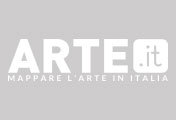Richard Serra: Animal habitats live and stuffed… Roma, La Salita, 1966

© 2022 Richard Serra | Richard Serra, Live Pig Cage I, 1966. Gabbia, maiale vivo ed elementi vari I Ph. Aldo Durazzi / Archivio DUfoto
Dal 21 June 2022 al 9 October 2022
Roma
Luogo: MACRO Museum
Indirizzo: Via Nizza 138
Orari: Martedì: 12.00 – 21.00. Mercoledì, giovedì e venerdì: 12.00 – 19.00. Sabato e domenica: 10.00 – 19.00. Lunedì chiuso. Ultimo ingresso 30 minuti prima della chiusura
Curatori: Sara Catenacci
Enti promotori:
- Roma Culture
Costo del biglietto: ingresso gratuito
Telefono per informazioni: +39 06 696271
E-Mail info: info@museomacro.it
Sito ufficiale: http://www.museomacro.it
La mostra Richard Serra: Animal habitats live and stuffed… Roma, La Salita, 1966 è dedicata alla ricostruzione, tramite documenti fotografici e d’archivio, di una mostra leggendaria ma ancora ai più sconosciuta: la prima personale dell’artista Richard Serra, inaugurata a Roma, presso la Galleria La Salita, il 24 maggio 1966.
Dopo aver studiato pittura presso la Yale School of Art, Richard Serra parte per l’Europa con una borsa di studio che lo conduce prima a Parigi e poi, nel 1965, a Firenze, dove si trasferisce con l’allora moglie, l’artista Nancy Graves. Da qui compie brevi viaggi di studio in Nordafrica e nel sud dell’Europa: a Madrid vede Las Meninas (1656 c.) di Diego Velázquez, che costituisce per lui un momento di rottura con lo spazio pittorico; a Firenze visita il Museo de La Specola e s’interessa alla storia dei serragli e dei giardini zoologici della città, l’ultimo dei quali distrutto nel novembre del 1966 dall’alluvione che colpisce la città.
Durante la sua permanenza in Italia, l’artista inizia una serie di ricerche che mettono in discussione tanto un approccio illusionistico alla rappresentazione pittorica, quanto l’utilizzo della “griglia” modernista: «È stato allora che ho deciso di fare delle gabbie – racconta al critico Hal Foster – di riempirle di materiali, di usare animali vivi, di fare qualsiasi cosa per sfuggire alla mia formazione…». Invitato dal gallerista Gian Tomaso Liverani a esporre nel suo spazio romano, Serra vi porta nel maggio del 1966 le sue sperimentazioni più recenti: diciannove pezzi tra gabbie – con animali vivi o impagliati – e assemblaggi di ogni sorta, per sottoporre a verifica le nozioni di illusione e realtà. «Era Surrealismo-assemblage-da cortile», ricorda a posteriori. «Stavano succedendo un sacco di cose: Rauschenberg, Lucas Samaras, Ed Kienholz, e molti altri che lavoravano con l’assemblage».
Grazie al ritrovamento di materiali d’archivio e fotografici – tra cui alcune stampe da un servizio realizzato appositamente dall’agenzia romana DUfoto e un cinegiornale d’epoca – questa mostra restituisce la personale del giovane artista statunitense in tutta la sua immediatezza e libertà espressiva, qualità che avevano subito colpito la scena artistica italiana di quegli anni. Visitata e chiacchierata dai protagonisti emergenti della neoavanguardia italiana, Animal habitats… fu oggetto di numerose polemiche, oltre che di una denuncia per la vendita di animali al posto di oggetti d’arte, alla quale Liverani replicò invocando «la libertà [dell’artista] di esprimere il proprio pensiero con qualunque mezzo ritenga più idoneo».
Frammenti di questa libertà e audacia sono messi a disposizione del visitatore in questo focus monografico, in questo studio di una mostra, quasi fosse lo storyboard di un film, dove sequenze d’immagini e testimonianze scritte scorrono in parallelo per far apparire la visione di un momento seminale della storia dell’arte e delle esposizioni.
RICHARD SERRA (San Francisco, 1938) è un artista che vive e lavora a New York e a North Fork, Long Island. Nel 1961 si laurea in letteratura inglese presso University of California Santa Barbara, mentre lavora in acciaieria per mantenersi durante gli studi. Si iscrive poi alla Yale School of Art dove, tra 1961 e 1964, studia pittura e collabora con Joseph Albers al libro The Interaction of Color (1963). In quegli anni entra in contatto con artisti come Philip Guston, Robert Rauschenberg, Ad Reinhardt e Frank Stella. Nel 1964, dopo la laurea, si sposta a Parigi e poi, nel 1965, a Firenze. Nel maggio 1966 apre la sua prima mostra personale presso la Galleria La Salita di Roma. Tornato negli Stati Uniti, si stabilisce a New York, dove frequenta, tra gli altri, Carl Andre, Walter De Maria, Eva Hesse, Sol LeWitt e Robert Smithson. Sempre nel 1966 realizza le prime sculture in materiali come fibra di vetro e gomma e dal 1968 esegue una serie di lavori in cui getta piombo fuso sulle giunture di elementi architettonici, tra pavimento e mura, realizzandone il calco. Questi e altri lavori, caratterizzati da un approccio alla scultura come esperienza fenomenologica – della gravità, dello spazio e del tempo – sono esposti nel 1969 nella sua prima personale newyorkese da Leo Castelli. Sperimenta inoltre con il film e il video e dagli anni Settanta si dedica alla realizzazione di monumentali sculture in acciaio. Tra queste Tilted Arc per Federal Plaza a New York (1981, rimossa nel 1989) e The Matter of Time(1994–2005), otto sculture installate al Guggenheim Museum di Bilbao. Serra ha più volte partecipato a mostre internazionali come documenta, la Biennale di Venezia e Whitney Biennial. È stato protagonista di mostre retrospettive nelle maggiori istituzioni artistiche e ha ricevuto numerosi premi alla carriera, tra cui il Leone d’Oro della Biennale di Venezia (2001).
Opening 21 giugno, dalle ore 18 alle ore 21
Dopo aver studiato pittura presso la Yale School of Art, Richard Serra parte per l’Europa con una borsa di studio che lo conduce prima a Parigi e poi, nel 1965, a Firenze, dove si trasferisce con l’allora moglie, l’artista Nancy Graves. Da qui compie brevi viaggi di studio in Nordafrica e nel sud dell’Europa: a Madrid vede Las Meninas (1656 c.) di Diego Velázquez, che costituisce per lui un momento di rottura con lo spazio pittorico; a Firenze visita il Museo de La Specola e s’interessa alla storia dei serragli e dei giardini zoologici della città, l’ultimo dei quali distrutto nel novembre del 1966 dall’alluvione che colpisce la città.
Durante la sua permanenza in Italia, l’artista inizia una serie di ricerche che mettono in discussione tanto un approccio illusionistico alla rappresentazione pittorica, quanto l’utilizzo della “griglia” modernista: «È stato allora che ho deciso di fare delle gabbie – racconta al critico Hal Foster – di riempirle di materiali, di usare animali vivi, di fare qualsiasi cosa per sfuggire alla mia formazione…». Invitato dal gallerista Gian Tomaso Liverani a esporre nel suo spazio romano, Serra vi porta nel maggio del 1966 le sue sperimentazioni più recenti: diciannove pezzi tra gabbie – con animali vivi o impagliati – e assemblaggi di ogni sorta, per sottoporre a verifica le nozioni di illusione e realtà. «Era Surrealismo-assemblage-da cortile», ricorda a posteriori. «Stavano succedendo un sacco di cose: Rauschenberg, Lucas Samaras, Ed Kienholz, e molti altri che lavoravano con l’assemblage».
Grazie al ritrovamento di materiali d’archivio e fotografici – tra cui alcune stampe da un servizio realizzato appositamente dall’agenzia romana DUfoto e un cinegiornale d’epoca – questa mostra restituisce la personale del giovane artista statunitense in tutta la sua immediatezza e libertà espressiva, qualità che avevano subito colpito la scena artistica italiana di quegli anni. Visitata e chiacchierata dai protagonisti emergenti della neoavanguardia italiana, Animal habitats… fu oggetto di numerose polemiche, oltre che di una denuncia per la vendita di animali al posto di oggetti d’arte, alla quale Liverani replicò invocando «la libertà [dell’artista] di esprimere il proprio pensiero con qualunque mezzo ritenga più idoneo».
Frammenti di questa libertà e audacia sono messi a disposizione del visitatore in questo focus monografico, in questo studio di una mostra, quasi fosse lo storyboard di un film, dove sequenze d’immagini e testimonianze scritte scorrono in parallelo per far apparire la visione di un momento seminale della storia dell’arte e delle esposizioni.
RICHARD SERRA (San Francisco, 1938) è un artista che vive e lavora a New York e a North Fork, Long Island. Nel 1961 si laurea in letteratura inglese presso University of California Santa Barbara, mentre lavora in acciaieria per mantenersi durante gli studi. Si iscrive poi alla Yale School of Art dove, tra 1961 e 1964, studia pittura e collabora con Joseph Albers al libro The Interaction of Color (1963). In quegli anni entra in contatto con artisti come Philip Guston, Robert Rauschenberg, Ad Reinhardt e Frank Stella. Nel 1964, dopo la laurea, si sposta a Parigi e poi, nel 1965, a Firenze. Nel maggio 1966 apre la sua prima mostra personale presso la Galleria La Salita di Roma. Tornato negli Stati Uniti, si stabilisce a New York, dove frequenta, tra gli altri, Carl Andre, Walter De Maria, Eva Hesse, Sol LeWitt e Robert Smithson. Sempre nel 1966 realizza le prime sculture in materiali come fibra di vetro e gomma e dal 1968 esegue una serie di lavori in cui getta piombo fuso sulle giunture di elementi architettonici, tra pavimento e mura, realizzandone il calco. Questi e altri lavori, caratterizzati da un approccio alla scultura come esperienza fenomenologica – della gravità, dello spazio e del tempo – sono esposti nel 1969 nella sua prima personale newyorkese da Leo Castelli. Sperimenta inoltre con il film e il video e dagli anni Settanta si dedica alla realizzazione di monumentali sculture in acciaio. Tra queste Tilted Arc per Federal Plaza a New York (1981, rimossa nel 1989) e The Matter of Time(1994–2005), otto sculture installate al Guggenheim Museum di Bilbao. Serra ha più volte partecipato a mostre internazionali come documenta, la Biennale di Venezia e Whitney Biennial. È stato protagonista di mostre retrospettive nelle maggiori istituzioni artistiche e ha ricevuto numerosi premi alla carriera, tra cui il Leone d’Oro della Biennale di Venezia (2001).
Opening 21 giugno, dalle ore 18 alle ore 21
SCARICA IL COMUNICATO IN PDF
COMMENTI

-
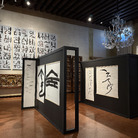 Dal 8 November 2025 al 11 January 2026
Venezia | Museo Correr
Dal 8 November 2025 al 11 January 2026
Venezia | Museo Correr
CARATTERI. Calligrafia e tipografia: Corea del Sud e Stati Uniti
-
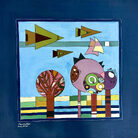 Dal 8 November 2025 al 22 February 2026
Brescia | Museo di Santa Giulia
Dal 8 November 2025 al 22 February 2026
Brescia | Museo di Santa Giulia
Material for an Exhibition. Storie, memorie e lotte dalla Palestina e dal Mediterraneo
-
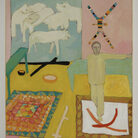 Dal 8 November 2025 al 18 January 2026
Perugia | Perugia, Spoleto e Gubbio
Dal 8 November 2025 al 18 January 2026
Perugia | Perugia, Spoleto e Gubbio
Mimmo Paladino. Antologica
-
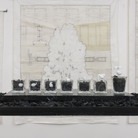 Dal 7 November 2025 al 25 January 2026
Roma | Museo Carlo Bilotti Aranciera di Villa Borghese
Dal 7 November 2025 al 25 January 2026
Roma | Museo Carlo Bilotti Aranciera di Villa Borghese
Silvia Scaringella. Deus sive natura
-
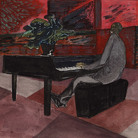 Dal 5 November 2025 al 1 March 2026
Asti | Palazzo Mazzetti
Dal 5 November 2025 al 1 March 2026
Asti | Palazzo Mazzetti
PAOLO CONTE. Original
-
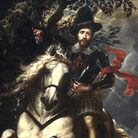 Dal 28 October 2025 al 15 February 2026
Brescia | Pinacoteca Tosio Martinengo
Dal 28 October 2025 al 15 February 2026
Brescia | Pinacoteca Tosio Martinengo
Peter Paul Rubens. Giovan Carlo Doria a cavallo


